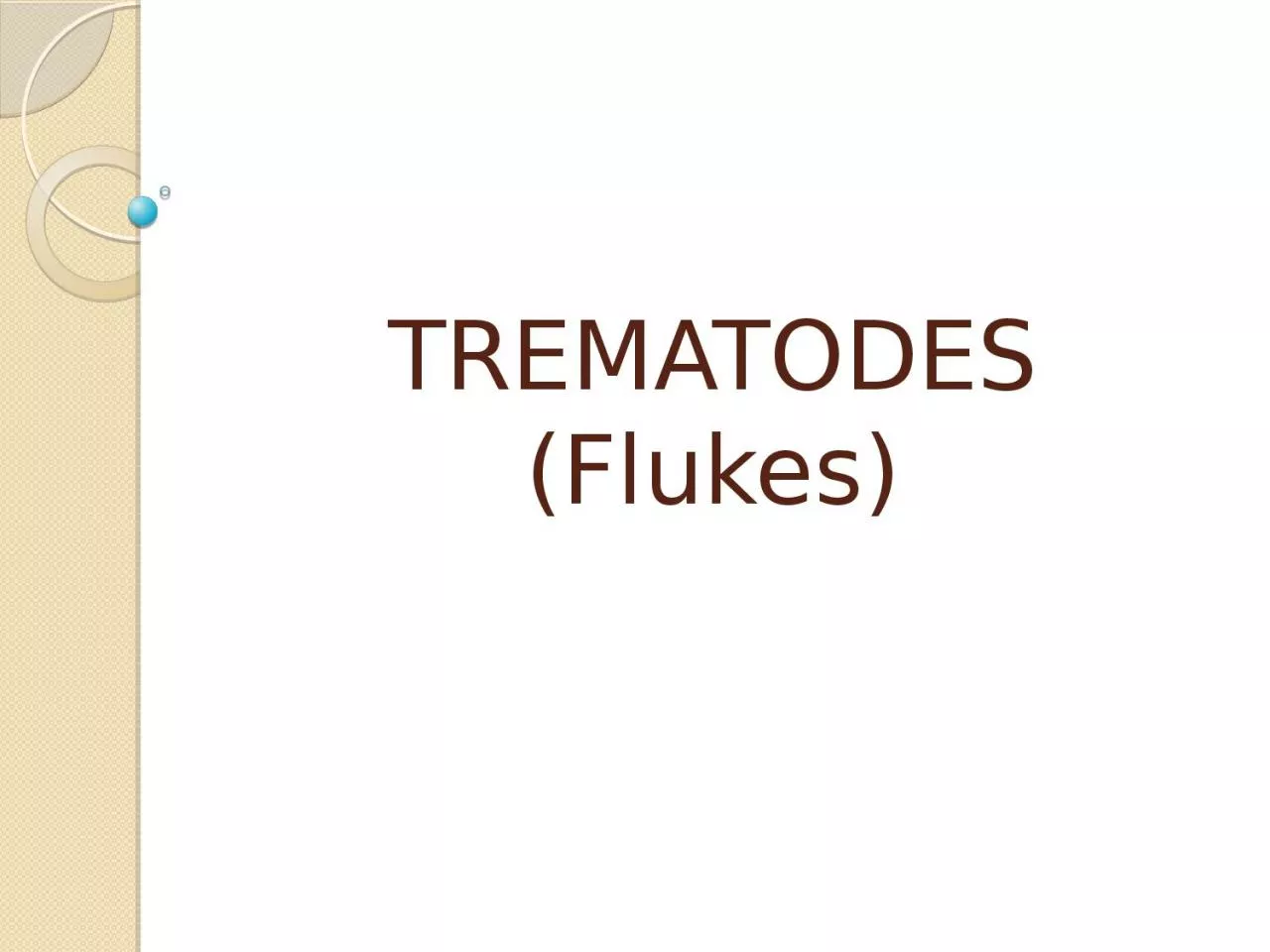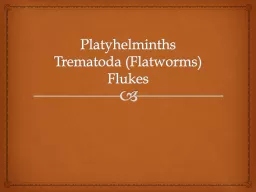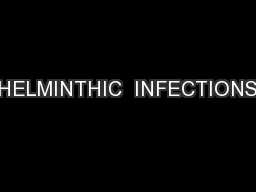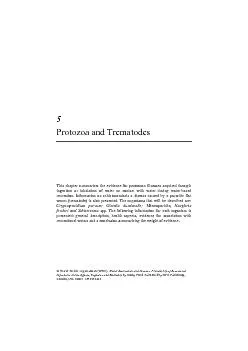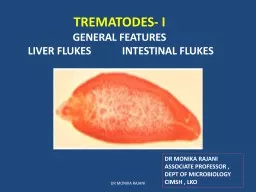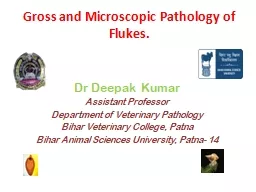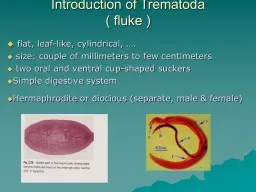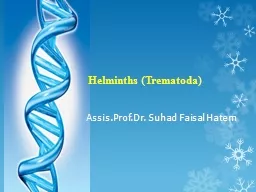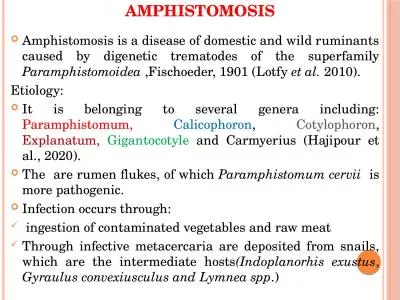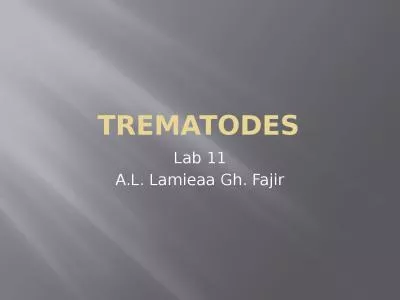PPT-TREMATODES (Flukes) Common features:
Author : FoxyLady | Published Date : 2022-08-02
They are flat provided with suckers as organ of attachment Trematodes are usually leaf shaped and commonly named as flukes Fluke means flat body with suckers
Presentation Embed Code
Download Presentation
Download Presentation The PPT/PDF document "TREMATODES (Flukes) Common features:" is the property of its rightful owner. Permission is granted to download and print the materials on this website for personal, non-commercial use only, and to display it on your personal computer provided you do not modify the materials and that you retain all copyright notices contained in the materials. By downloading content from our website, you accept the terms of this agreement.
TREMATODES (Flukes) Common features:: Transcript
Download Rules Of Document
"TREMATODES (Flukes) Common features:"The content belongs to its owner. You may download and print it for personal use, without modification, and keep all copyright notices. By downloading, you agree to these terms.
Related Documents

